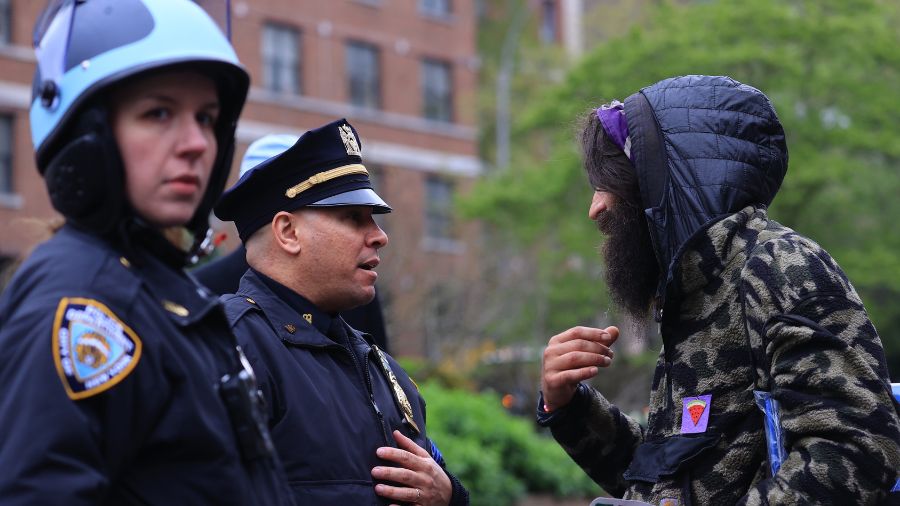Rantz: Gov. Inslee’s coronavirus plan will slowly kill restaurants across Washington
May 5, 2020, 9:35 PM | Updated: May 6, 2020, 8:15 am
As it’s currently constructed, Gov. Jay Inslee’s phase-in approach to reopen Washington’s economy will slowly kill restaurants and bars, not revive them.
Under the current plan, restaurants would be allowed to resume in-house dining services up to 50% of their normal capacity, with a table size of less than five people, during Phase 2. This is seen as a lifeline to the many struggling restaurants and bars across the state.
Unfortunately, that phase isn’t expected until at least the first week of June. Even then, it may just postpone the inevitable for hundreds of restaurants already struggling to get by during the coronavirus pandemic.
Rantz: WA businesses revolt, refuse to close during coronavirus order
Restaurants during a slow coronavirus death
It’s common knowledge that restaurants, even in good times, are expensive businesses to operate. It’s obviously harder to run a restaurant during the coronavirus pandemic.
It’s not just about ordering the right amount of products for your anticipated customer base, but it’s about staffing. It’s why operating at 50% capacity is incredibly risky and, for many restaurants, more expensive than it’s worth.
To run a restaurant, you need a staff. With a ban on in-house dining, waitstaff have been temporarily laid off at many restaurants. Right now, they’re operating on a skeleton crew of chefs and one or (maybe) two others to handle pick-ups.
How do you staff a restaurant to 50% capacity, during the coronavirus pandemic, when you don’t even know how many people to expect? And if you don’t know how many to expect, how do you properly purchase goods from vendors for the menu?
Make a wrong move, which is likely, and you end up ordering too much food to sell before it spoils while hiring staff members for customers that aren’t showing up. Now, you owe a vendor cash you don’t have and a staff member a wage you can’t handle. Plus, you’ve rehired the staff, taking them off unemployment.
Analyzing the restaurant concerns in Iowa and Georgia, Eater came to a similar conclusion: The 50% occupancy won’t work.
“I know the restaurant business pretty well,” Iowa restaurateur Alexander Hall told Eater. “I’ve been doing it for 27 years, and at 50 percent capacity restaurants don’t work. Unless the landlord gives you 50 percent rent, and MidAmerican energy is giving you 50 percent off the [energy] bill.”
‘It’s grim’
Lisa and her husband purchased Otter Bar and Grill in Seattle’s Eastlake neighborhood last November. Little did they know that weeks later they’d be struggling with the coronavirus like so many others restaurants.
“It was great to start with, but now it’s scary,” she told me in her empty restaurant, chairs and tables stacked up against another by the windows. “It’s grim.”
Otter Bar is usually busy and fun. It’s neither at this point. Now they’re relegated to infrequent pick-up orders, with sales down, she estimates, over 50%. Lisa let her staff go, with the exception of four cooks that share hours.
Can Otter Bar survive with 50% occupancy? If so, she’d be doing most of the work.
“Well, at 50% I might fill up, but I won’t get my employees back because they’re used to having a full restaurant,” she explained. “And they’re making their unemployment… probably making more than they made here. And if there’s less occupancy, why would they want to come back?”
The job loss will be devastating
Bob Donegan is President of Ivar’s, a local institution. He’s had to lay off 769 employees to survive this pandemic. And while he thinks he’ll survive, he predicts others won’t.
“I think when the governor lifts the order to allow people to go back to restaurants, we’ll see 30% of those restaurants not reopen,” Donegan told the Dori Monson Show on our sister station KIRO Radio. “And then of the restaurants that do reopen, I would guess another 10% will not survive the first year.”
This would be catastrophic not just to the industry, but the livelihoods of so many Washingtonians. The hospitality industry accounts for the majority of Washington jobs. Can the restaurant industry survive the coronavirus?
Restaurants in the age of coronavirus
Under Inslee’s phase-in plan, restaurants must practice social distancing, which means tables will be spaced out more so than before. Some restaurants can handle the transition, but many smaller restaurants can’t.
And as the industry awaits more specific guidance, what does the “new normal” look like when it comes to dining out?
“Some people are talking about, you know, serving customers with masks and gloves,” Lisa from Otter Bar explains. “And some people are talking about having a plastic barrier while serving couple customers. And how awkward would that be? I mean, it’s great to go out and go to your old watering hole again. But if there has to be plastic between you and there’s no facial expressions seen, everything is in gloves. It’s not ever gonna be the same.”
We don’t know how soon people will return to restaurants. But we’re certain it won’t be the same experience. And unfortunately, many Washingtonians may have already visited their favorite restaurant for the last time without even realizing it.
Listen to the Jason Rantz Show weekday afternoons from 3-6 p.m. on KTTH 770 AM (or HD Radio 97.3 FM HD-Channel 3). Subscribe to the podcast here. Follow @JasonRantz on Twitter and Instagram or like me on Facebook.


















